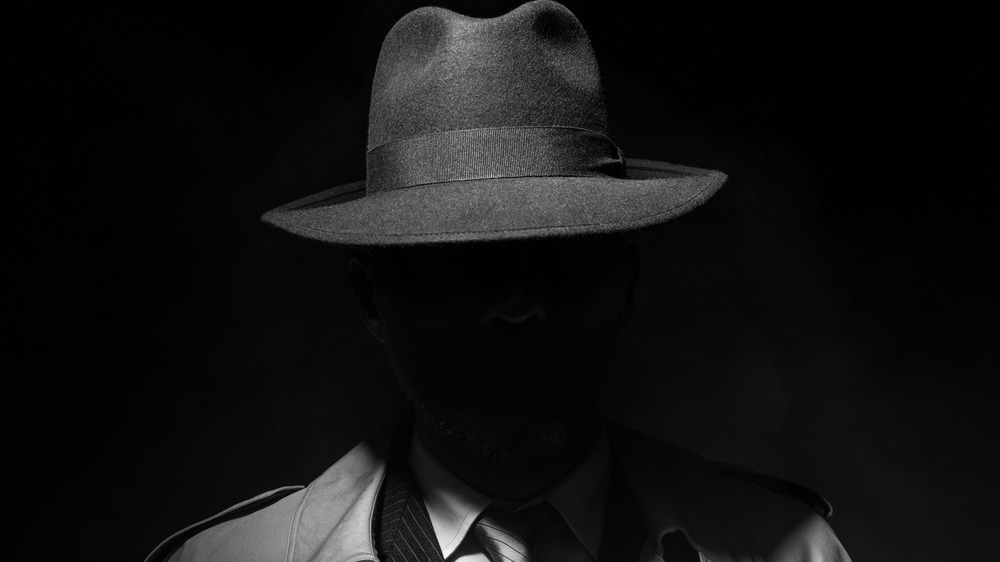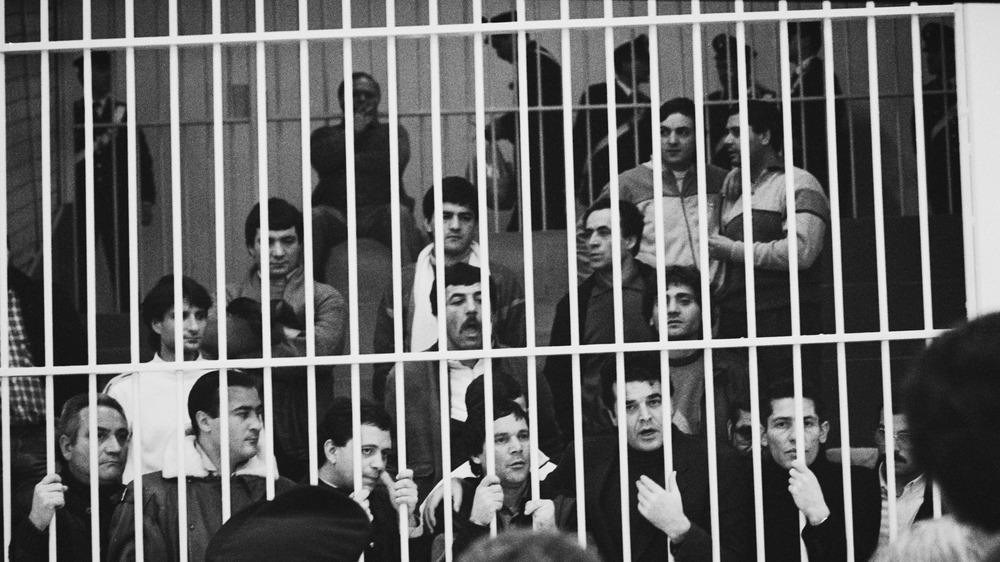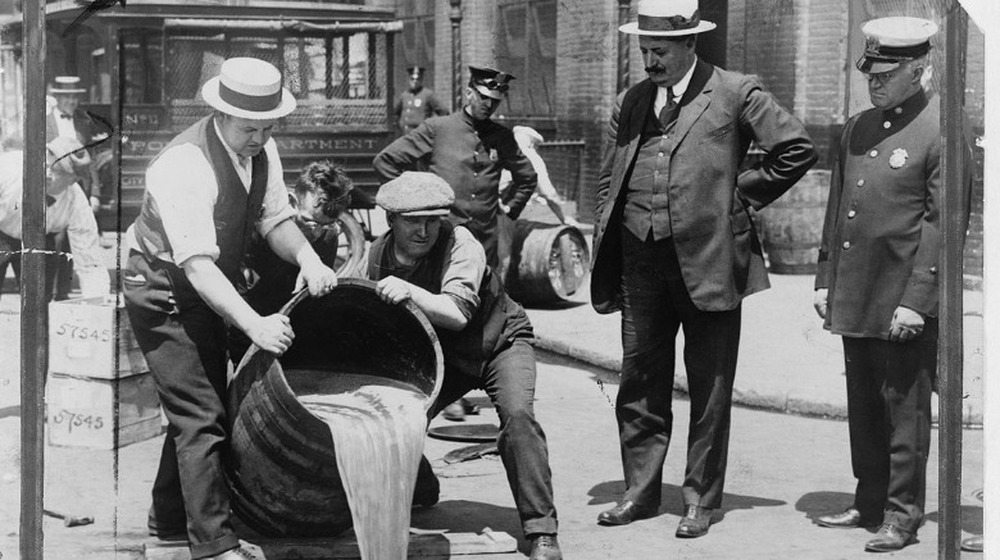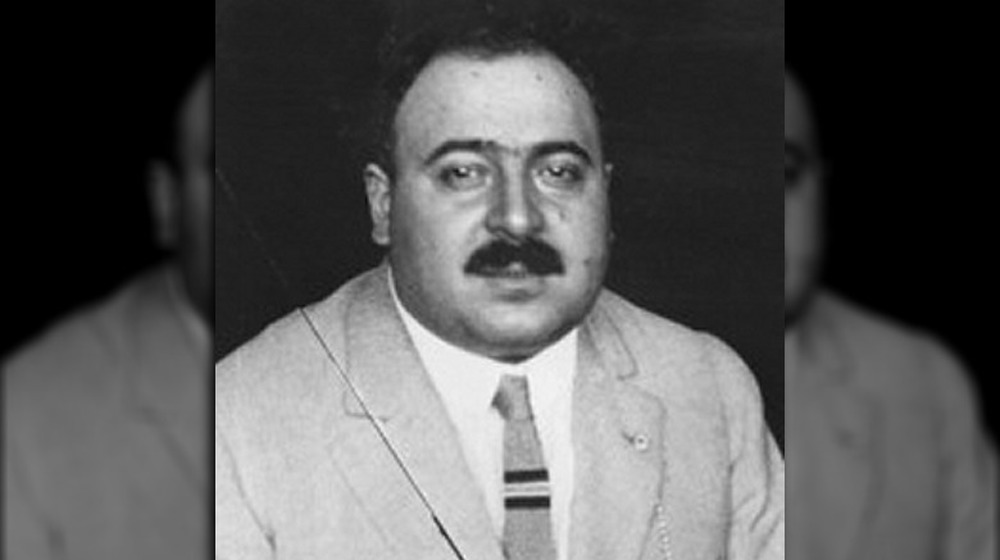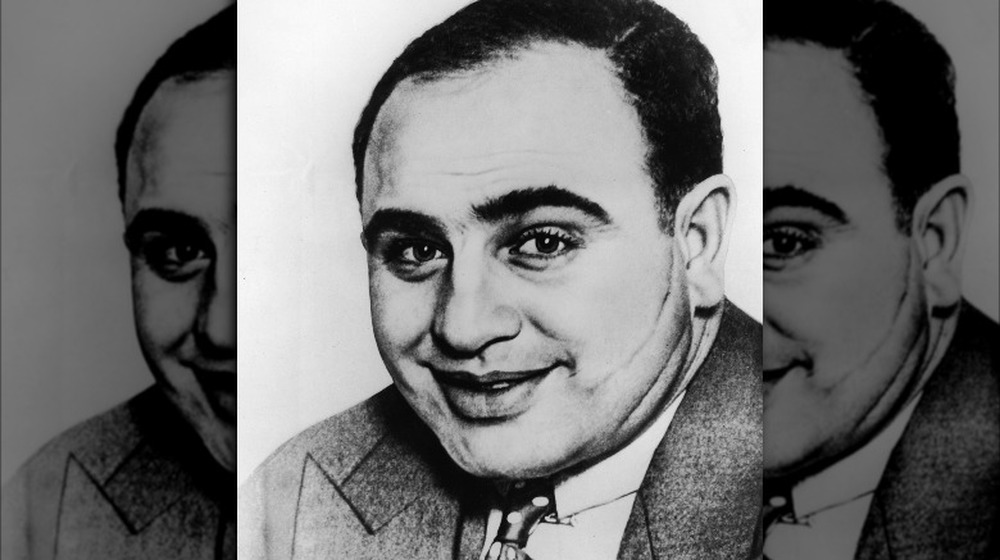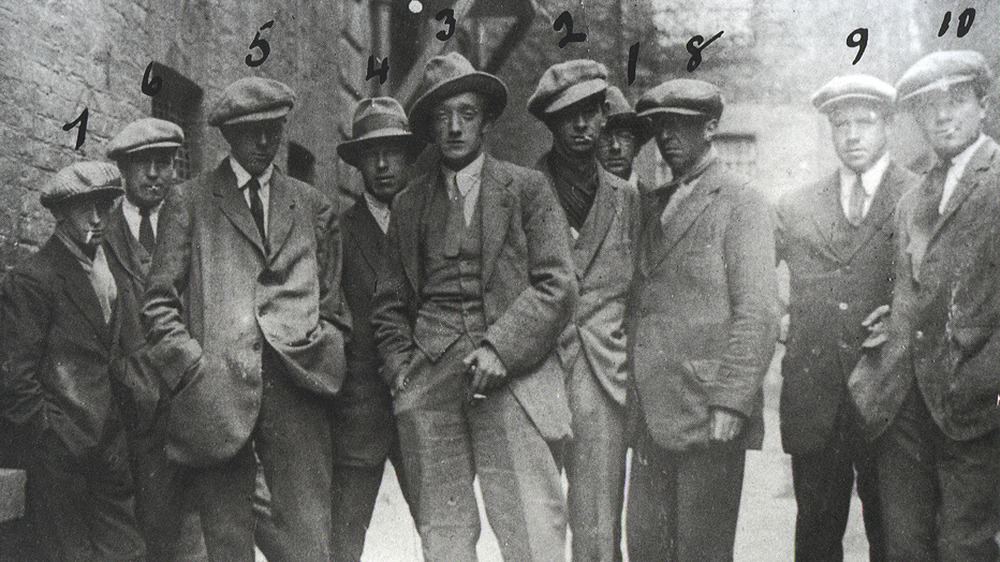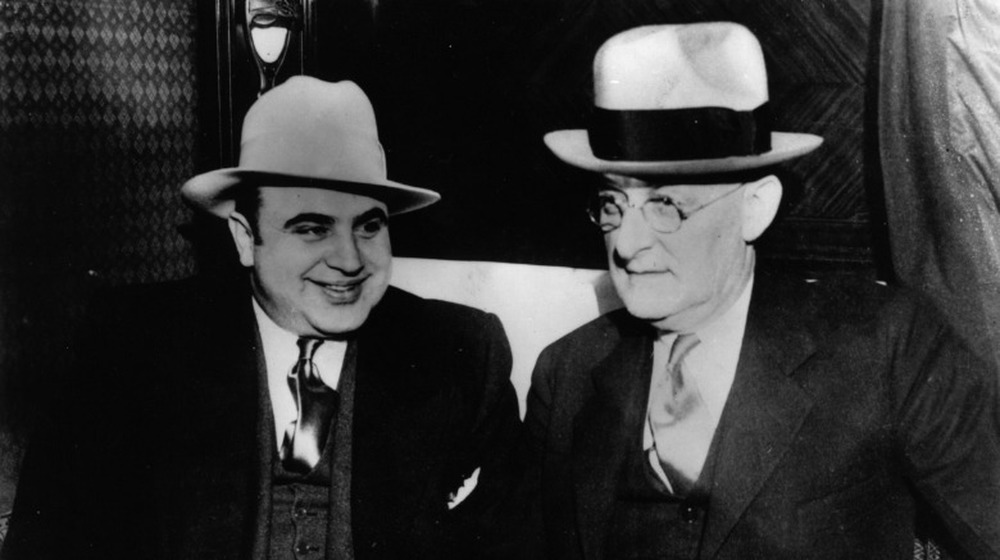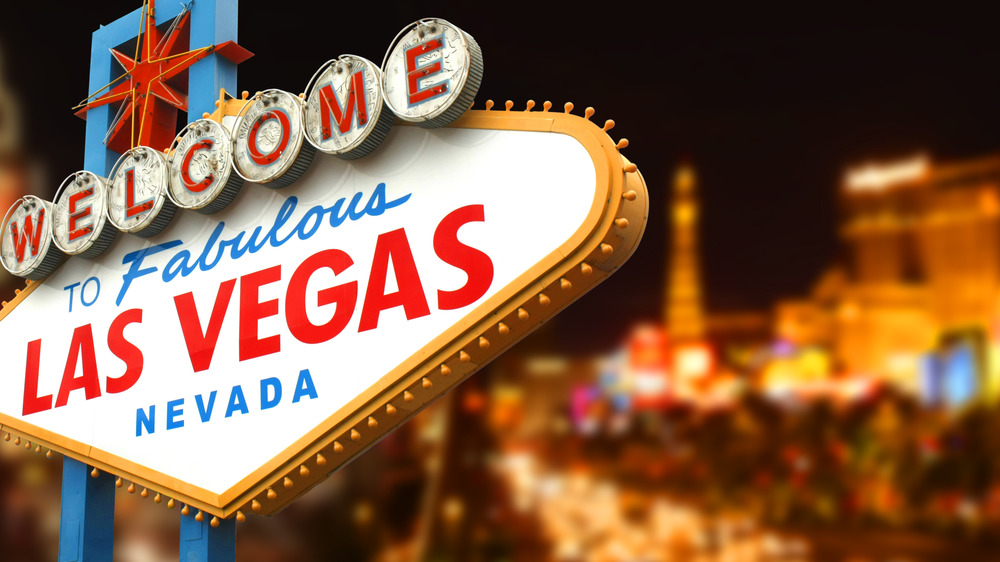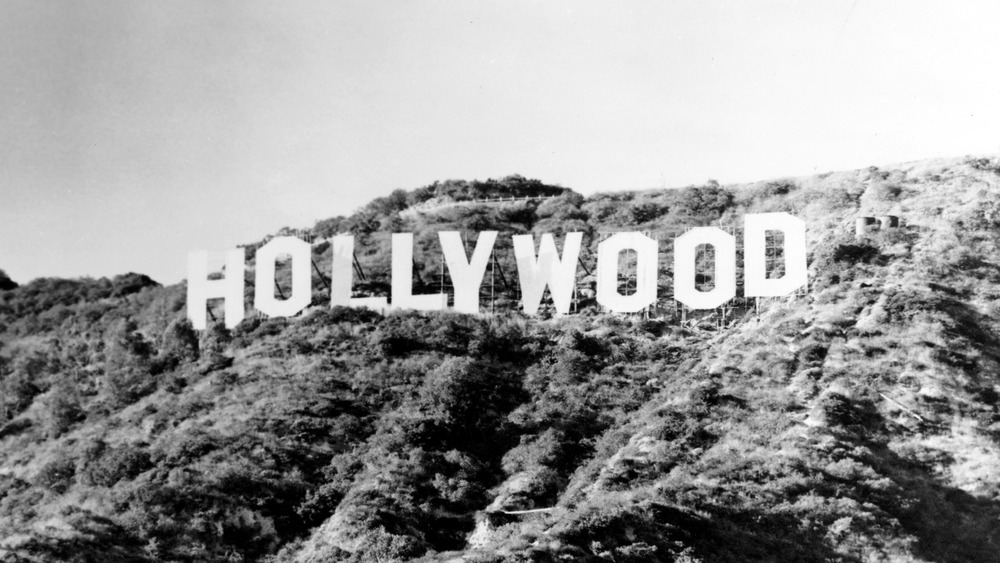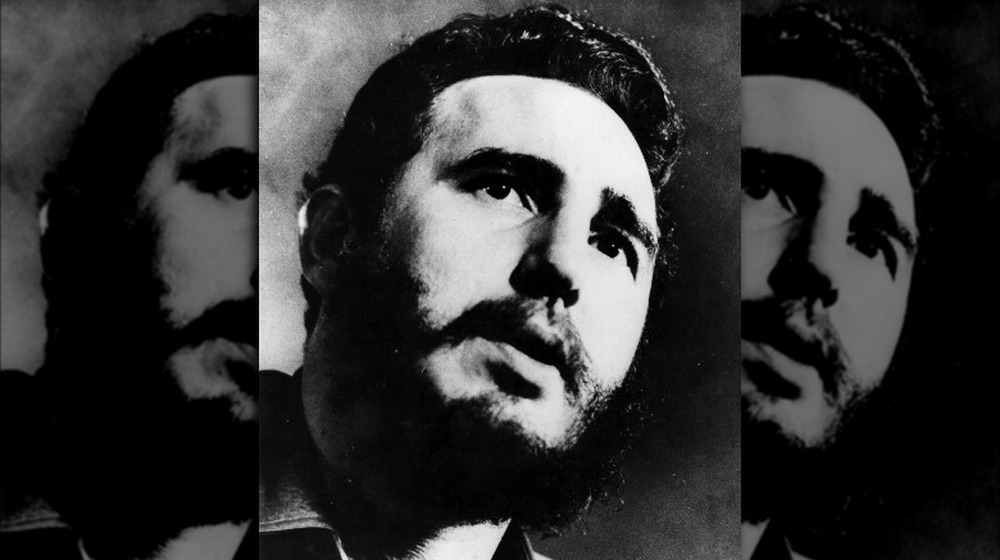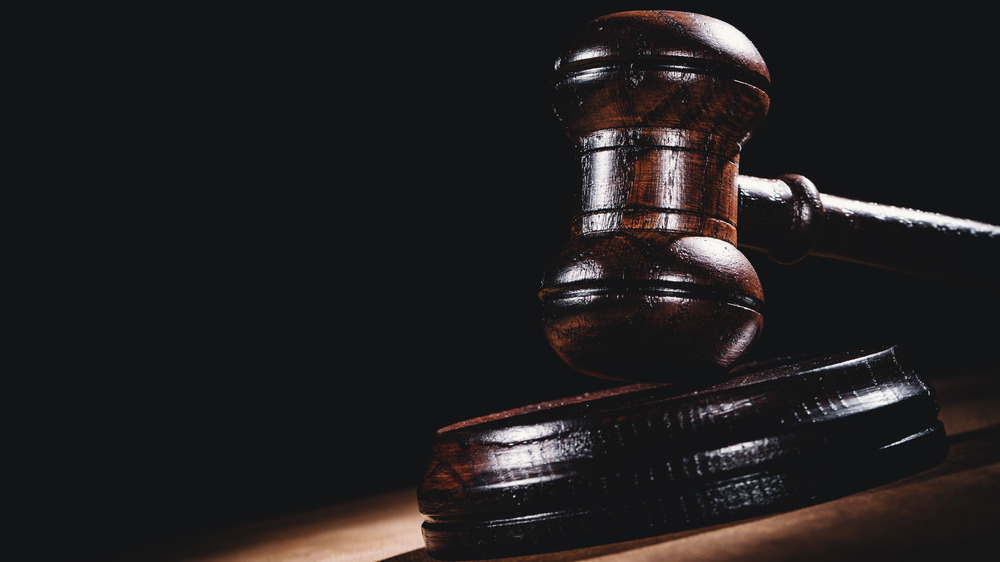This Is The Most Powerful Mafia In History
When you hear the word "mafia", what image is it that comes to mind? Probably a big bad mob boss, dressed in a sharp suit and a fedora, maybe a smoking cigar in hand. You know, The Godfather — that sort of thing. It's a really particular image that Hollywood has had a blast running with. But, okay, what about peeling back that Hollywood lens? What did things look like in real life, in real history? And just who was actually on top — which mafia was actually the most powerful of all?
And that's kind of an interesting question. New York is something of a hotspot for organized crime, which really came into its own during the early 20th century. Those families have got to have been pretty powerful. But then again, the mafia actually predates Prohibition and the 1920s; it's been around quite a bit longer, and that original Italian mafia is nothing to scoff at. Or maybe, this title belongs somewhere else entirely.
Now, to be fair, all of these groups have been powerful at different points in time and wreaked plenty of havoc all their own. That said, the Chicago Outfit (yes, the one run by the infamous Al Capone) might be one of the most impressive of all. Of course, they have the normal mob stuff going for them, but also an insane amount of influence in a morally corruptible Chicago (and beyond). Seriously, there are some weird parts to this story.
The Mafia's roots in Sicily
So what is it that makes the mafia, well, the mafia? It's a word that tends to get tossed around with mobs, gangs, crime syndicates, and the like, but what is it that actually separates a mafia from all the rest? Well, according to History, that would be the mafia's Italian — and specifically Sicilian — origins, though the mafia didn't actually start as a criminal thing. All of this was just born out of Sicilian history; the island spent a lot of that history under the rule of a bunch of different outsiders at a bunch of different times. With all that shifting leadership, native Sicilians weren't all too trusting of central authority, so they decided to take things into their own hands.
They began to band together, forming groups called "mafie" — private groups held together by vows of loyalty ("omerta") and dealing out vigilante justice as they saw fit. Those groups, later called families, would end up forming the Sicilian Mafia.
That's when it started turning more criminal. In the 19th century, things started turning chaotic in Italy, and the Sicilian Mafia found the perfect place to start extorting people for protection money. And when the new, unified Italian government couldn't deal with crime themselves, they started turning to mafia families for help, which only let them become more deeply entrenched in the politics of the country as a whole.
Prohibition and the American Mafia
Things were going great for the Sicilian Mafia for a pretty long time. Their influence was steadily growing, and they were becoming pretty powerful — at least, until they weren't. History explains that things started to change in the early 20th century. Mussolini had begun his rise to power, and he wasn't all too keen on letting the mafia hang around, especially with the influence they had. They were a direct threat to the fascist regime he was building, and he saw to it that they were all but eliminated.
But that wasn't the end of the mafia. Far from it. Because, sure, Mussolini's star was rising in the 1920s, but something else was happening at that point. Namely Prohibition.
According to the FBI, Italian mafia members had already been emigrating to the US since the late 19th century — the first recorded instance of mafia violence is cited as the 1890 execution-style murder of a police superintendent in New Orleans. Mafia members had already made their way to the US, but Prohibition really brought the American Mafia and organized crime to life, as Prohibition: An Interactive History says. The mafia could suddenly provide the public with the booze they badly wanted, and with that came profits. Huge profits. All of a sudden, this wasn't just small-time crime, but an opportunity to turn crime into a full business, mafia families even hiring lawyers and accountants to keep things in order.
The rise of the Chicago Outfit
With Prohibition well underway and Italian mafia members already making their names in the US, Chicago really just proved to be the perfect place for organized crime. Maybe that's why it played host to one of the most successful crime families of the American Mafia — the Chicago Outfit. Chicago already had a reputation for being wild and lawless, filled with corruption at every turn (via University of Michigan); Al Capone's Beer Wars by John J. Binder adds that the city tolerated crime more than most places, because of their mindset of "anything goes". A swelling population, tiny police force, and growing destitution really didn't help either, pushing more people to the easy money of crime.
The actual Chicago Outfit really started with Jim Colosimo (pictured above) around 1910 (although it didn't have that name at the time). According to American Mafia History, Colosimo managed to build himself an empire out of prostitution and brothels, extending his influence throughout a lot of southern Chicago.
But with the onset of Prohibition, Colosimo decided he didn't want to take advantage and dip into the bootlegging business, and that might've been his downfall. Johnny Torrio — Colosimo's nephew and underboss — saw the possibility that bootlegging presented and knew that passing it up would be a mistake (via National Crime Syndicate). And so he successfully plotted to have his uncle killed, taking over the Outfit himself, adding bootlegging to their list of business ventures.
Al Capone and the Chicago Outfit
It doesn't seem like much of a stretch to guess that a lot of people would answer the question of "Who's the most famous mob boss?" with "Al Capone." And that's perfectly understandable.
Biography explains that he came from pretty humble origins, nothing at all like the life he later lived. Born in 1899, Capone was part of a respectable family, his father — a well-educated barber — emigrating from Italy to Brooklyn, New York. But Capone's future really started when he met Johnny Torrio; the young Capone ended up following Torrio into the criminal underworld in New York and later Chicago, where he inherited the Outfit from him in 1925. With his hands deep in gambling, prostitution, and bootlegging, as well as Torrio's old nightclubs and speakeasies in his pockets, his reputation rose. Influence over local authorities and politicians let his businesses flourish, and any opposition to doing business with him was handled with threats (via National Crime Syndicate).
In no time, he became a celebrity with a flair for the dramatic. He walked the streets unarmed as a show of power, dressed in custom suits, and smoked expensive cigars. Unlike other mob bosses, he openly interacted with the media and would take regular trips to the opera, tailoring his image as a respectable businessman with the good of the people at heart. His image really mattered to him (though it eventually fell apart, and he was convicted for tax evasion in 1931).
The Chicago Outfit and gang violence
It should suffice to say that, around this time, there wasn't a lot of peace to be had. Really, that seems to be a hallmark of organized crime, but the Outfit in particular got into some messy stuff. The Beer Wars were a big one. According to American Mafia History, during the 1920s, the Outfit controlled the southern part of Chicago; the north was run by Irish-American gangs, and the Outfit began encroaching on their territory. It wasn't ideal, but the two sides managed a truce...until Torrio was scammed out of half a million dollars. Then the firefights started. Gunfire raged in all-out urban warfare that ended with one of the northern gang leaders murdered, and Torrio shot by an enemy gang member, according to John J. Binder's The Chicago Outfit. That's when Torrio left the Outfit to Capone.
And Capone had it in mind to take out Bugs Moran's north side gang. Enter the St. Valentine's Day Massacre. On February 14, 1929, a bootlegger lured a group of Moran's men into a garage, only for Capone's men to turn up dressed as police, staging a fake raid (via Biography). With the façade of legal authority on their side, they lined up the gang members and pelted them with machine gun fire.
Moran wasn't among them, but it didn't really matter. Everyone knew Capone had been behind the hit, and it was hard not to fear (and respect) him for it.
The Chicago Outfit had friends in high places
The University of Michigan puts one thing pretty blatantly: Chicago's police were easily corrupted. Even just a few dollars was probably enough to buy your way out of jail time. Politicians were pretty much the same, and it didn't take much for criminals to suddenly become above the law entirely. John J. Binder's The Chicago Outfit adds that most police would wear a façade of legality for the press, posing as they destroyed liquor, only to turn to bootlegging as soon as the cameras were gone.
The Outfit definitely took advantage of that. Politicians and police were actively on Capone's payroll (via National Crime Syndicate), and at one point, Capone and his brothers managed to weasel their way into positions of power in the government (via Biography).Capone is actually seen above with a US Marshal.
And it just wasn't something that the city liked to think about, even as recently as 2017. The Chicago Tribune reported on the indictment of William Hanhardt, a former Chief of Detectives who was running a jewelry theft ring for the Outfit. Hanhardt had basically been a superstar at the department up to that point, even though they probably knew about his, well, extracurricular activities. Decades earlier, City Hall had been warned of his associations with the Outfit, but still promoted him regardless, and even right after the indictment, police and politicians were suspiciously quiet about it all, some even conveniently retiring shortly after.
The Chicago Outfit had influence well past Chicago
Just to be really clear, the Chicago Outfit isn't the American Mafia. Really, it's more like one of the arms of the American Mafia. (Honestly, the overall organization of the mafia is really, really detailed). That said, it's a surprisingly important part of it.
A lot of the power of the American Mafia has historically been centered in New York; according to the FBI, Salvatore Manzano and Lucky Luciano were, at different times, the most powerful mafia leaders in the US, both operating out of New York. In that same vein, the mafia families in New York have been prominent in the world of organized crime — namely, the Gambino, Luccese, Genovese, Bonanno, and Colombo families have a lot of power, involved in drug trafficking, prostitution, and racketeering, just to name a few things (via Biography). They aren't called The Five Families for nothing.
Luciano ended up setting up a governing body for the American Mafia, calling it the Commission. It included the heads of the Five Families (of course), but also brought in the head of the Chicago Outfit (via National Crime Syndicate). Basically, the Outfit had a seat at the table where the biggest decisions were being made — who could be made into a mob boss, how rackets would be divided among families, the like.
They also expanded into the western US, especially Las Vegas, where they took over casinos owned by The Five Families (via American Mafia History).
Extorting Hollywood
Post-Prohibition, it was time for the Chicago Outfit to do a little expanding. Frank Nitti took over the Outfit from Capone, and, according to Chicago Tribune, by 1935, Nitti was in need of money. Bootlegging wasn't super profitable, and he needed a new revenue stream, so he started to turn his eyes westward to California and Hollywood. Through the 1930s and 40s, Hollywood wasn't the most stable industry. Prone to strikes that could shut down filming, studios mostly lived in fear of unions and the prospect that they might gain power, as it's put in an article by Film Noir Foundation. Of course, that's where the Outfit could come in.
They started getting in league with the unions, some union leaders drawn to the possibilities and seeking them out, while others found themselves forced into the situation. With their men at the top of the unions, they could start squeezing film studios, making deals and taking payments that ended up extorting millions from the film industry and companies like MGM and 20th Century Fox. But it wasn't just studios they took advantage of. Outfit-aligned union bosses would skim money off the top of workers' paychecks, splitting it between themselves and their associates back in Chicago. And as for anyone who didn't want to pay up? Well, their careers and lives were pretty quickly threatened.
The scheme worked well, raking in a lot of money, at least until the IRS eventually caught wind of the whole operation.
The Chicago Outfit and the CIA
Here's a wild story. One time, the CIA worked with the mafia to kill Castro. Okay, the hit didn't actually happen, to be fair. But it was planned.
The story goes like this: the CIA approached former FBI agent Robert Maheu in 1960 with a top-secret mission. Killing Fidel Castro (via Chicago Magazine). Castro's takeover of Cuba had essentially left the CIA without contacts, but the same couldn't be said for the mafia. They'd been running the casinos there; said casinos had been closed by Castro, but the contacts were still around. And, well, Maheu happened to know some people in the Outfit, namely Johnny Roselli. Maheu gave Roselli the offer, confirmed its legitimacy, and Roselli agreed to help set things up. He wouldn't even need to be paid; taking down Castro was his patriotic duty (but also the Outfit had lost profits under Castro's regime). Roselli ended up bringing Sam Giancana (one of the FBI's most wanted) into the mix, and the men came up with a plan. Nothing like the CIA's other plans — raining down bullets (too risky) or a dramatic Second Coming of Christ (no joke, that was a plan) — but just simple poison that the Outfit's contact could get into Castro's drink.
Long story short: it didn't work. The Outfit's contact (probably) got cold feet, Robert Kennedy wasn't exactly enthused to know that the CIA was working with the mafia, and a lot of things went sideways.
Operation Family Secrets
Alright, so a lot of this stuff that the Chicago Outfit was involved in took place around the early- to mid-1900s. But then, what's happened since then?
In general, the 1980s and 90s introduced anti-racketeering laws, and federal authorities were able to start convicting more high-ranking mobsters (via History). The widespread influence of the mafia started weakening, and other members of the mafia also started turning to the police and testifying against their fellow mobsters.
That last part in particular crippled the Chicago Outfit, and nowhere is that more obvious than in the FBI's "Operation Family Secrets". In summer 1998, Frank Calabrese Jr. was serving a prison sentence when he contacted the FBI and offered to help them take down his father, Frank Calabrese Sr., a high-ranked member of the Chicago Outfit (via The Mob Museum). The FBI had Calabrese wired in order to hear Calabrese Sr. talk about the Outfit — current day business things, but also stories of various murders he'd been a part of. Those stories implicated his brother, Nicholas W. Calabrese, who decided to turn witness and spill mob secrets to the authorities. A lot of investigation later, the Operation was able to uncover answers for eighteen then-unsolved murders. Fourteen members of the Outfit were indicted in 2005, and five of them stood trial three years later, which included three crew bosses and the acting head. (The other nine either pled guilty, died, or were too ill to stand trial).
